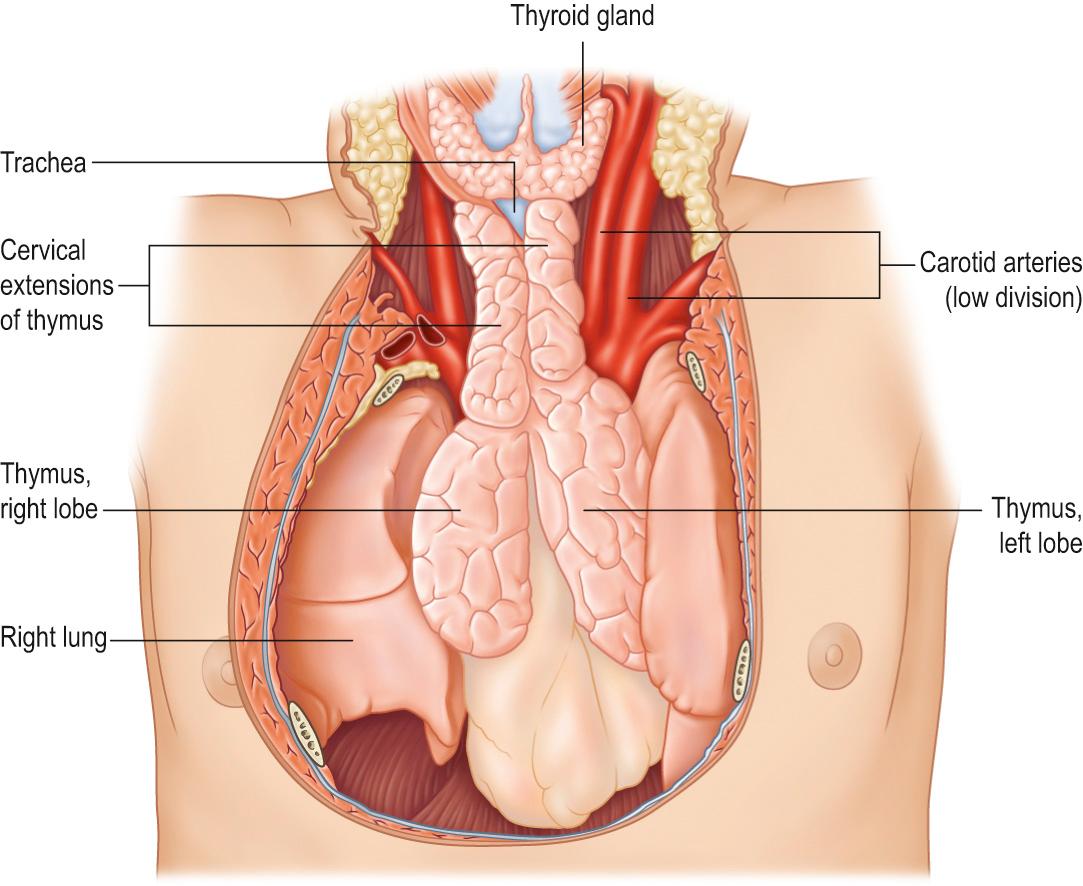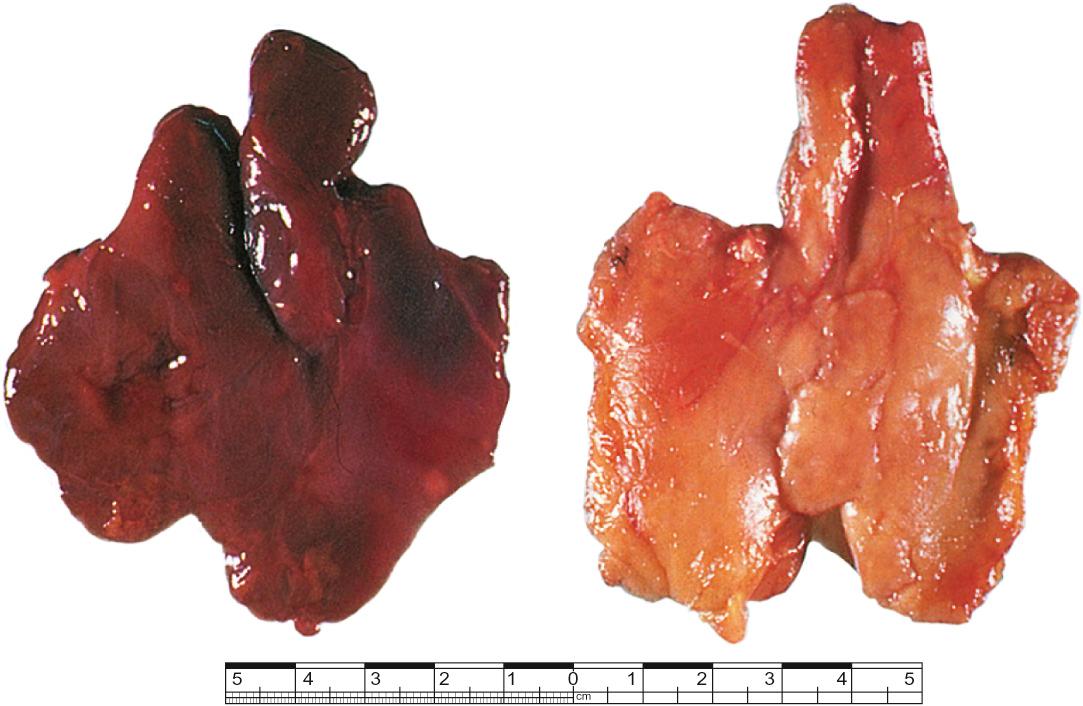Physical Address
304 North Cardinal St.
Dorchester Center, MA 02124
Thymectomy
The thymus is an encapsulated soft, bilobed organ; the two lobes are joined in the midline by connective tissue that merges with the capsule of each lobe. It is usually located in the anterior mediastinum. The thymus plays an important role in the immune system from the early part of life until puberty and, as a result, it is usually largest during this time. At birth, it can weigh about 10–15 g, rapidly increasing to about 20 g and remaining this size for the rest of life. Its dimensions are 4–6 cm long, 2.5–5 cm wide and 1 cm thick. In early childhood, it usually assumes a more pyramidal shape and can extend from the suprasternal notch down to the fourth intercostal space ( Fig. 48.1 ). Over time, through the later part of childhood, it lengthens and the cervical portion becomes less noticeable. After puberty, the thymus starts to atrophy and becomes replaced by fibrofatty infiltration. It becomes thinner and greyer compared with the deep red colouration of early life ( Fig. 48.2 ).


In the adult, the thymus is situated along the midline superior aspect of the anterior mediastinum. Superiorly and anteriorly, the upper poles of the thymus lie behind sternohyoid and sternothyroid ( Ch. 18 ). It can extend up to the inferior poles of the thyroid gland, to which it is connected by the thyrothymic ligament. The left upper pole usually sits slightly more superior than the right. The phrenic and recurrent laryngeal nerves can be closely related laterally to the upper poles of the thymus, particularly if these are enlarged. The rest of the thymus is closely related to the sternum, upper costal cartilages and internal thoracic vessels anteriorly and to the pleura and phrenic nerve laterally. Posterior relations of thymus include the thoracic trachea, the great vessels of the superior mediastinum and the anterior pericardium and heart. While the left brachiocephalic vein usually lies posterior to the thymus, it is not uncommon to find it embedded in, and on occasions encircled by, the thymus.
The thymus receives its arterial supply from branches of the internal thoracic and inferior thyroid arteries and occasionally from a branch of the superior thyroid artery; most of the arterial supply enters the thymus via its upper pole. As no definite hilum exists, the arterial branches either travel along the interlobar septa before entering the thymus at the junction of the cortex and medulla, or reach the thymic tissue directly through the capsule. Thymic veins drain to the left brachiocephalic, internal thoracic and inferior thyroid veins, and occasionally directly into the superior vena cava. One or more veins often emerge medially from each lobe of the thymus to form a common trunk opening into the left brachiocephalic vein and require careful ligation during thymectomy.
The thymus has no afferent lymphatics. Efferent lymphatics arise from the medulla and corticomedullary junction, drain through the extravascular spaces, accompany the supplying arteries and veins, and end in the brachiocephalic, tracheobronchial and parasternal nodes.
The thymus is innervated from the sympathetic chains via the cervicothoracic (stellate) ganglia or ansa subclavia and from the vagi. Branches from the phrenic and descending cervical nerves (inferior roots of the ansa cervicalis) are distributed mainly to the capsule.
Become a Clinical Tree membership for Full access and enjoy Unlimited articles
If you are a member. Log in here